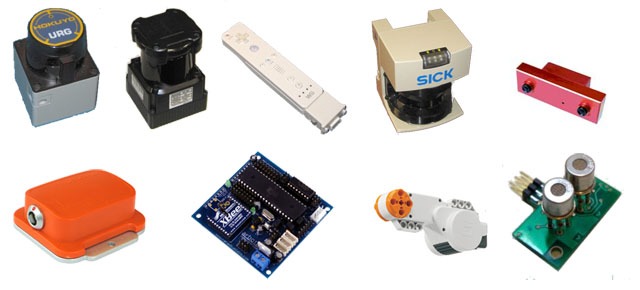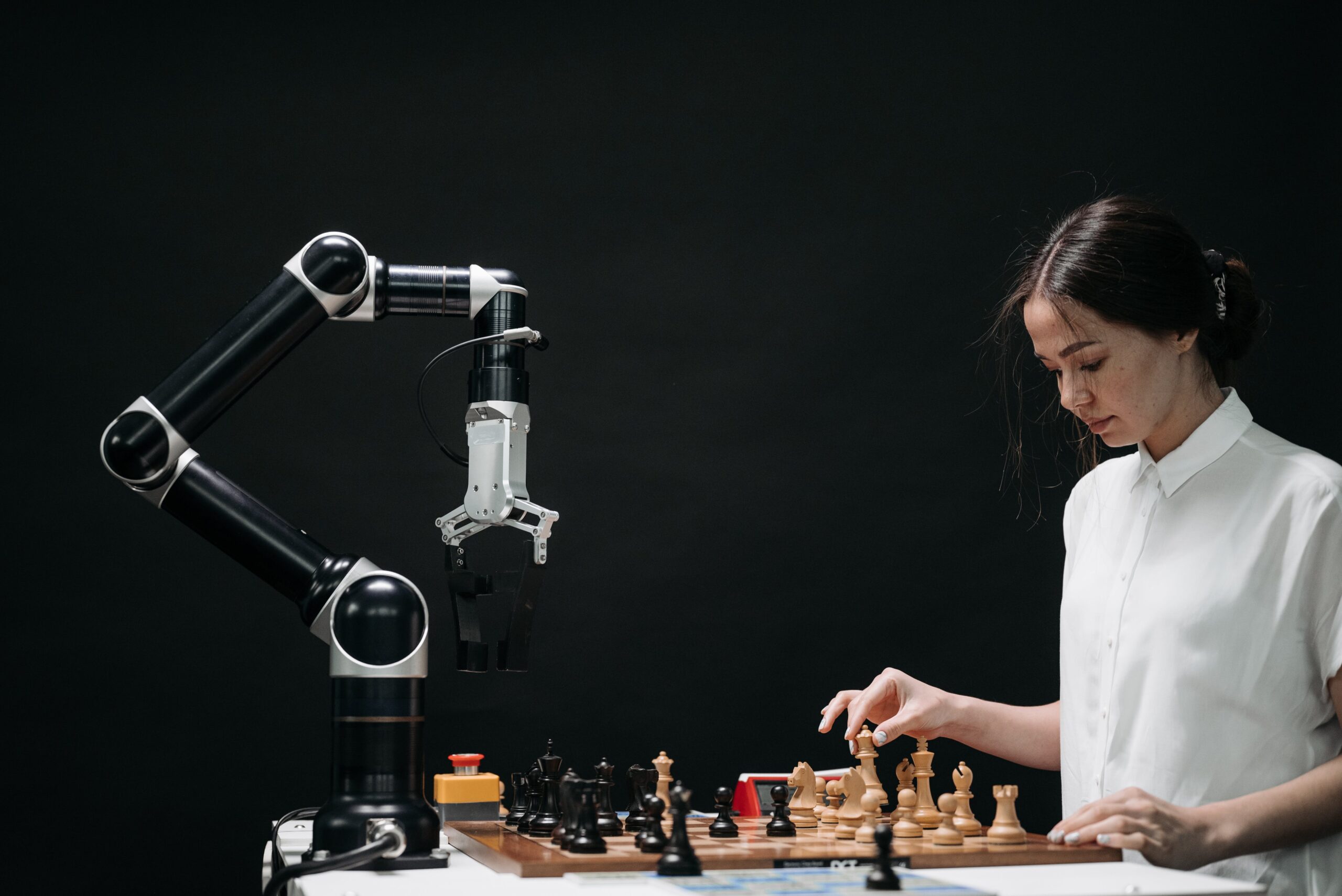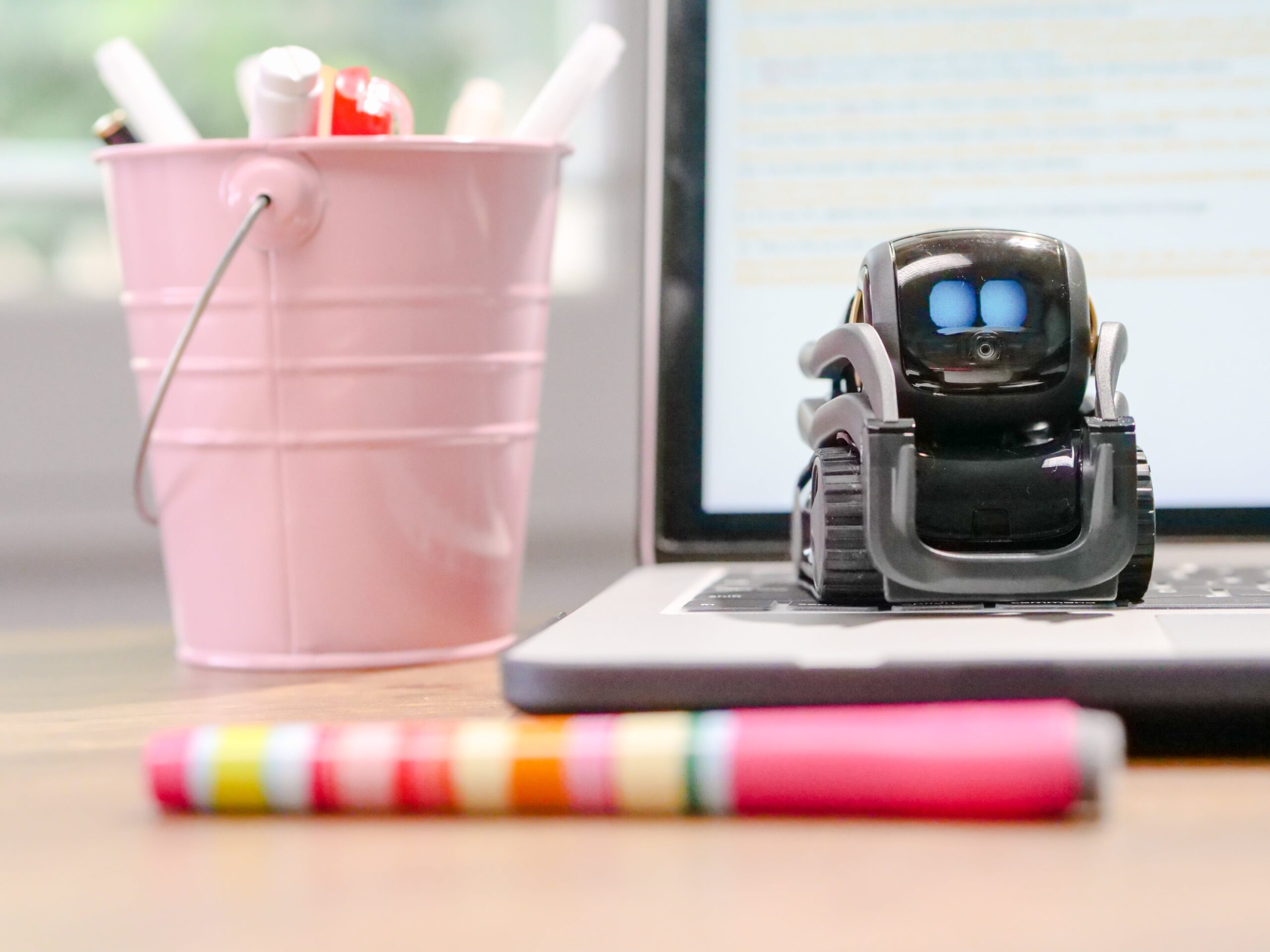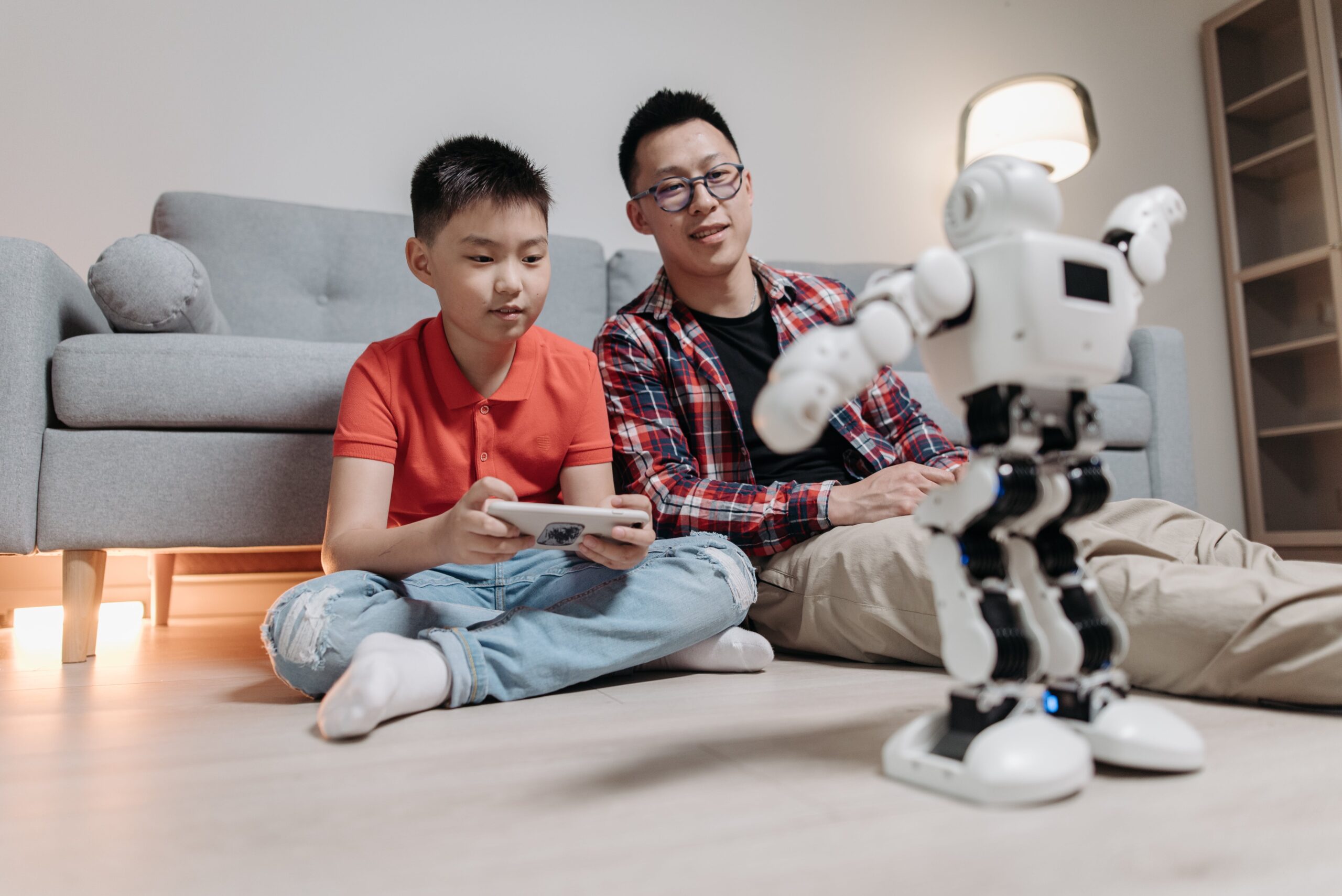In the dynamic field of robotics, the incorporation of sensors has become a game-changing development. Sensors, which are frequently compared to a robot’s senses, are essential to giving machines the capacity to recognize, engage with, and adjust to their surroundings. This article explores the vast world of sensors in robotics, looking at the different kinds of sensors, how they work, and the many uses they have that have revolutionized everything from healthcare and manufacturing to autonomous vehicles and space exploration. Come along as we set out to discover the crucial function that sensors play in the field of robotics and the countless opportunities that they open up.
Types and Functions of Robot Sensors
Light Sensors
The light sensor produces a voltage differential and is used to detect light. Photovoltaic cells and photoresistors are the two types of robotic light sensors. When converting solar radiation energy into electrical energy, photovoltaic cells are used. Of course, solar robots are frequently made using these sensors.
Conversely, photoresistors are employed to vary light intensity to modify their resistance. More light shining on it causes the resistance to drop. Due to their low cost, these light sensors are widely utilized in robotics.
Sound Sensor
When a sound is detected, a sound sensor transforms the sound into an electrical signal. Robots may travel through sound by using this kind of sensor; in fact, it is possible to create a sound-controlled robot that can identify and react to a particular sound or set of sounds to do specified tasks.
Temperature Sensor
To identify temperature variations in the surroundings, a temperature sensor is used. This sensor primarily uses the voltage difference concept to measure temperature changes and produce the environment’s equivalent temperature. The temperature may be detected using a variety of temperature sensor ICs (integrated circuits), such as the LM34, TMP37, TMP35, TMP36, LM35, etc. Robots that must operate in harsh environments, such as an ice glacier or a desert, can employ these sensors.
Contact Sensor
Touch sensors are another name for contact sensors. They are primarily used in robotics to detect changes in force, acceleration, position, velocity, and torque at the joints between the manipulator and the end-effector. These sensors need to make physical touch to effectively tell the robot how to behave. The sensor is used in a variety of switches, including tactile bumper switches, button switches, and limit switches.
Proximity Sensor
Proximity sensors in robotics are used to estimate the distance between a robot and specific objects without the robot having to make physical touch with them. The sensors sense the items in question using magnetic fields, which makes this feasible. Infrared transceivers, ultrasonic sensors, and photoresistors are examples of devices that use proximity sensors.
Infrared (IR) Transceivers
A sensor or transceiver that uses infrared (IR) technology measures and picks up infrared radiation in its surroundings. Active and passive infrared sensors are also available. Active infrared sensors use a light-emitting diode (LED) and a receiver to both emit and detect infrared radiation. These active transceivers are frequently used in robotic obstacle detection systems, where they function as proximity sensors.
Conversely, passive infrared (PIR) sensors do not produce infrared radiation from the LED; instead, they merely detect it. Motion-based detection is primarily the application of passive sensors.
Ultrasonic Sensor
An ultrasonic sensor is a tool that uses ultrasonic sound waves to detect an object’s distance and then transforms the sound into an electrical signal when it is reflected. Ultrasonic sensors use sound waves to detect reflected waves from an object to calculate its distance. Because of this, its primary application is as proximity sensors in robotic obstacle detection and anti-collision safety systems.
Photoresistor
Photoresistors are electronic devices whose resistance changes in response to the quantity of light applied to them. Another name for them is light-dependent resistors or LDRs. They are frequently used to measure light intensity and determine if light is present or absent because of their sensitivity to light. More light results in less resistance when using photoresistors.
Distance Sensor
Without making physical touch, distance sensors can be used to determine an object’s distance from another object. For distance sensors to function, a signal must be sent out and then returned with the difference measured. Distance sensors are frequently linked to ultrasonic sensors since this signal might be infrared, LED, or ultrasonic waves, depending on the technology.
Ultrasonic Distance Sensors
A device that uses high-frequency sound waves to detect the distance to an object is called an ultrasonic distance sensor. Sound waves are emitted by ultrasonic sensors at a frequency far greater than that of human hearing. They then bide their time till the sound is reflected. The sensor calculates the distance to the target by timing the ultrasonic wave’s transmission and reception and comparing the result to the speed of sound.
Pressure Sensors
An electronic device that senses and controls pressure as well as converts detected physical data into an electrical signal is known as a pressure sensor, sometimes known as a pressure transducer. Piezoelectric technology is typically used in pressure sensors because piezoelectric components release an electric charge in direct proportion to the amount of stress they are under. Usually, pressure is the source of this stress.
Pressure sensors are used in industries to control steam in equipment, in cars to detect tire pressure or engine combustion pressure, and in airplanes to measure altitude and atmospheric conditions.
Laser Range Sensor
Rather than using radio or sound waves to detect target object range, a laser range sensor uses light waves from a laser. The target item reflects the laser pulse after being exposed to laser light from the transmitter on the sensor. The relationship between the speed of light and the interval between transmitting and receiving a signal is then used to compute distance.
Encoders
This is a robotics sensor that provides feedback. It transmits feedback signals that can be used to calculate speed, direction, count, or position. In a motion control system, they transform a motion into an electrical signal that may be understood by a kind of control device. The information is then used by such a control device to transmit a command for a particular task. Encoders generate signals using a variety of technologies, including resistive, optical (which is based on the interruption of light), mechanical, and magnetic.
Tilt Sensors
This is used to measure slant angles concerning a horizontal plane in robotics. They are employed to identify orientation or inclination. They are affordable, compact, lightweight, and simple to operate. These sensors, sometimes known as “tilt switches,” “mercury switches,” or “rolling ball sensors,” are non-wearing if utilized properly.
Service robots employ these kinds of sensors. Robots travel on wheels or legs, and to make sure they stay in the same spot, the inclination needs to be recorded many times per second.
Stereo Camera
The process of filtering noisy visual signals into organized data sets that are then transformed into useful symbolic abstractions or objects is known as a stereo camera. Stereo cameras are just one method used in the larger domains of computer vision and machine vision. To use it, two cameras must have a known physical connection, meaning they must be able to observe the same viewing area and have a certain amount of space between their focal centers.
Through triangulation, the systems may be used to determine an object’s distance. Off-planet terrestrial rovers, mobile robot navigation, and robotic control and sensing all employ stereoscopic image processing algorithms. To put it briefly, sensor cameras give your robots the ability to see their surroundings in real-time, which opens up new possibilities for process automation applications like vision-guided robotics.
Navigation or Positioning Sensors
These are sensors that help determine an object’s location precisely and accurately in space. Positioning technologies vary from meter-accurate global coverage to sub-millimeter-accurate workspace coverage.
Navigation sensors enable the application of orientation, speed, and route adjustments to achieve desired locations anywhere in the globe. They also allow the determination of intended and present positions. For autonomous mobile robots, navigation and placement are crucial tasks in robotics. Apart from GPS, other widely used navigation techniques are bionic and optical navigation.
GPS (Global Positioning System)
The GPS is a radio navigation system that is based on space. It is made up of a network of ground stations and satellite control stations for monitoring and control, as well as a constellation of satellites that emit navigational signals. It functions autonomously without the need for the user to send any data and without internet or phone reception.
GPS is used in robotics to help robots navigate and locate themselves over vast distances. To determine the relative positions between the two, the robot compares its GPS data with that of the target. This information helps to guide the robot’s next direction of travel. This indicates that these robots are autonomous vehicles that can travel and complete duties without the need for a driver.
Digital Magnetic Compass
This navigational tool may provide referential directions about the surface of the planet, making it a useful sensor for robots exploring their environment. It consists of a magnetized needle or bar that moves freely on an axis and a magnetized pointer that is often marked concerning North. It is aligned with the Earth’s magnetic field. For a robot’s navigation, the digital compass delivers measurements based on the Earth’s magnetic field.
Motion control and mobile robot heading detection are two of the primary uses of robotics. Therefore, it is a fundamental component of the navigational concepts of autonomous robotic systems.
Acceleration Sensor
Acceleration and tilt are measured using the acceleration sensor. A tool for measuring either static or dynamic acceleration is an accelerometer. Based on acceleration in one or more directions at a specific moment, the sensors offer a readout. Because accelerometers exist in a variety of configurations, it is critical to choose the right one for the robot by considering its bandwidth, sensitivity, number of axes (1-3), and output type (digital or analog) into account.
Static Force
This frictional force, which exists between any two things, is a gravitational force. Because of gravity, this force is constantly present. The amount of a robot’s tilt may be ascertained by measuring this force. This is essential for robot balance and for figuring out whether the robot is moving on a flat surface or an incline.
Dynamic Force
This is the term used to describe the acceleration needed for an item to move. It is the force that modifies an object’s size, direction, or location by acting upon it. It depends on time as well. Dynamic forces in robotics arise from a mechanism’s motion. An accelerometer can measure this force and provide information about the speed or velocity at which a robot is traveling.
Gyroscope
Gyroscopes, or just “gyros” for short, are instruments that gauge rotational speed. They are particularly helpful in robotics for heading or tilt measurement as well as stabilizing driving robots. To achieve this, the total angular displacement measurement is obtained by integrating the rate measurements. Thus, by programming, gyros may be utilized to help balance a robot and alert it when it is about to go over. The single-axis, three-axis, and IMU gyros are the three most often used types of gyroscopes.
Voltage Sensors
Wireless devices known as voltage sensors can be mounted on electrical equipment or machinery. They offer round-the-clock monitoring, scanning for voltage readings that could point to a problem. Excessively high or low voltage might damage property or point to a potential issue. When thresholds are crossed, alerts are promptly sent to a central computer system.
Current Sensors
This gadget generates a signal by the electric current passing through a wire while monitoring the current. An analog voltage or a digital output might be this created signal. The signal can then be utilized to operate the apparatus, save it for further examination in a data-gathering system, or use an ammeter to display the current that has been measured.
Sensors in Robotics Application
Because they enable robots to sense and interact with their surroundings, sensors are essential to robotics. They gather information about the robot’s environment, which may be processed to direct the robot’s activities and motions and make educated judgments. Common applications for sensors in robotics include the following:
Identifying and Avoiding Obstacles
Obstacles in the robot’s route are found using proximity sensors, such as LIDAR, infrared, and ultrasonic sensors. For autonomous navigation and collision avoidance, this information is essential.
Sensing of Position and Orientation
The robot’s position and orientation are detected using accelerometers, gyroscopes, and encoders. For accurate control and mapping in applications such as drones and driverless vehicles, this data is necessary.
Vision and Image Processing
For functions like object detection, tracking, and localization, cameras, and vision sensors are employed. Algorithms for machine learning can analyze visual input and derive conclusions from what the robot “sees.”
Environmental Monitoring
Robots may collect information about their surroundings with the use of environmental sensors, such as temperature, humidity, and gas sensors. Applications such as agricultural and environmental monitoring benefit from this.
Gripping and Manipulation
Robot grippers are equipped with force/torque sensors to gauge the forces used when manipulating objects. Particularly in industrial automation tasks, this input enables the robot to modify its grasp and pressure, guaranteeing safe and efficient item handling.
Distance and Range Sensing
Accurate distance measurements are made using sensors such as time-of-flight (TOF) cameras and laser range finders. They are useful for jobs where the robot must map its surroundings in great detail, such as 3D mapping. They are also utilized in robots for obstacle avoidance and navigation.
Color and Light Sensors
Color and light sensors can identify certain colors and levels of light. They are helpful in applications like line-following robotics, in which a robot uses color or light sensors to guide it as it follows a line on the ground.
Gesture and Proximity Sensors
Proximity sensors identify items or persons near the robot, whereas gesture sensors recognize hand or body motions. These sensors are useful in collaborative robotics and user interfaces, as well as for human-robot interaction.
Conclusion
In conclusion, sensors are essential to robots since they enable interaction and environmental awareness. The many uses of sensors, along with their types and functions, were examined in this article. Robotics’ automation and intelligence will likely be pushed to new limits by the continuous development of sensors.




